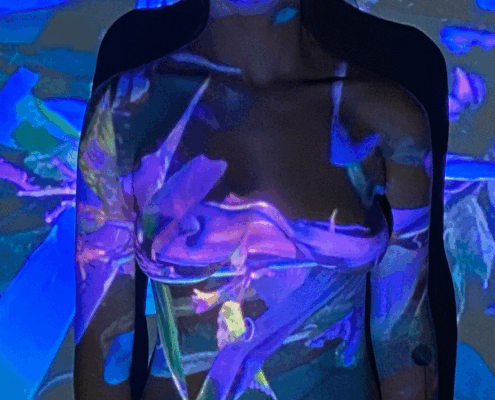“Time at work”. The title of the exhibition on view at Galleria Sozzani is self-explanatory. Since very ancient times, photography has always spelled the fatigue of men struggling against time and its erasures. Quite paradoxically and contrary to its commonly known purpose, the act of taking photographs is something that works according to a loss, thrives on that loss and eventually yields under the weight of time. With film works such as “There’s Something About Lillian (2002) and “Contacts” (1995) – also on display – you passed from the ostinato rigore of photography to the lush pleasures of the moving imagine. Were you searching for a safer harbor for your memories?
I don’t think about it that way. It seems to me that my photos have always been images from a film I didn’t do (this is the story I tell in Contacts). Of course in films I have more elements to tell the story, with a beginning and an end. In the portrait of Lilian Bassman, even though I did the film, she did it first! And I tried to be as close to her as I could.
I found a literary quality to your work, as if your furious clicks on the camera in the attempt to catch the right moment could be heard – and read – as words that desperately edge what has been lost with what can be contrived. Confabulatory in the senses of the conversational and the conjured up, with a Proustian bent, your visual “verbosity” tries to compensate for lost time by creating a continuous flow of sensory perceptions and many-voiced echoes that involves duration. Do you recognize a connection between written language and photography?
Thank you. In my films there are words, in my photos – that are silent – I hope one can read between the lines, can see what is not visible.
It seems that much of your work pivots on fear. Fear of missing an instant of grace that won’t happen again in the same way, fear that what you have so eagerly longed for would eventually go lost in a flux. How did you manage to incorporate all this in your work and turn it into a powerful tool for yourself? Do you think that, by dint of repetition, this fear can be gradually transformed into a calm confidence?
Fear is fear, and never goes.
After all that time, there is no outlet, the quest is the same, especially in the work, where, as you say, it crystallises on whatever you see, whatever you feel, mainly on the precipitation of time.
I don’t think I turned it into a tool, it is too unconscious when it happens, it is unpredictable when that fear escapes in my photographs.
 https://www.nastymagazine.com/wp-content/uploads/2020/06/TP_2017_Drawings_Europa-nach-dem-Regen.jpg
1106
1600
admin
https://www.nastymagazine.com/wp-content/uploads/2015/02/new-logo-basker-WHITE4.png
admin2020-06-25 17:43:112020-06-29 13:00:29Tim Plamper / Depth Dimensions
https://www.nastymagazine.com/wp-content/uploads/2020/06/TP_2017_Drawings_Europa-nach-dem-Regen.jpg
1106
1600
admin
https://www.nastymagazine.com/wp-content/uploads/2015/02/new-logo-basker-WHITE4.png
admin2020-06-25 17:43:112020-06-29 13:00:29Tim Plamper / Depth Dimensions

















